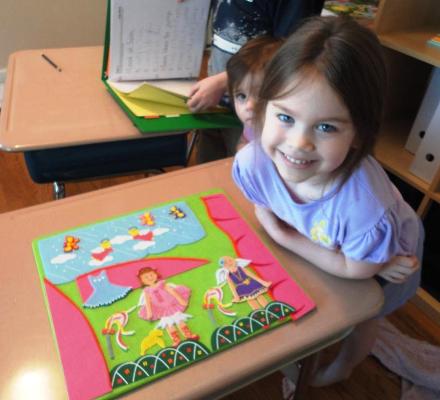Teaching Writing to Kids
As an Amazon Associate I earn from qualifying purchases. For more details, please see our disclosure policy.
Writing is a necessary communication skill for children to learn. Here are some resources that have worked well for us.

Want to save this post?
Enter your email below and get it sent straight to your inbox. Plus, I'll send you time- and money-saving tips every week!
I find irony in writing this post. I guess I find irony in teaching writing to my own kids.
You see, about 18 years ago, I was in teacher training for secondary English. We’ve already established that grammar wasn’t something my teaching program made a priority. Spelling wasn’t, either. Literature and composition, however, were. That’s almost all that was left!
Part of the irony is that although I had lots of training in teaching writing, there were still so many other methods to consider when I set out to teach my children at home.
And, in fact, writing can be one of the most perplexing things to teach, whether it’s your own kids or someone else’s. In the last 18 years, I’ve taught writing in public junior high and high schools as well as tutored writing from my own home. And then there are those six kids we call mine that I’ve taught since birth.

I can only report what’s worked for us in the past and what we’ve learned as well as where we’re headed in the new year. Your mileage may vary.
Please keep in mind that this post does include various affiliate links. If you make a purchase through those links, I am paid a small amount in way of advertising fees. Just FYI.
Here’s what I’ve gathered over the years:
1. Teach the different “language arts” in isolation.
Recently, the teaching of writing jelled amazingly well in my brain when I heard Susan Wise Bauer present on this at the Great Homeschool Convention. She emphasized over and over again — at the conference and even earlier in the year when I went to meet her at her home:
Don’t teach more than one new and different skill at the same time.
In her lecture entitled, THE COMPLETE WRITER: A Plan for Writing Well, Susan lists three skills that we want our elementary students to learn:
- basic grammar
- basic spelling
- basic writing
Unfortunately, many curricula out there combine these three skills all at once. This is difficult for young kids to process, especially if they excel in one area and struggle in another.
Further, we say to kids, “Think of an idea, find the words to articulate that idea, and then transfer those words onto paper, with proper spelling and grammar while you’re at it.”
So many kids — and adults — freeze while putting so many skills together at once. Susan suggested teaching these skills in isolation first until a child is practiced and then have them put them together. It’s similar to learning the scales before you can play a complete song.
This really hit home with me and has prompted me to think differently about how we do “language arts” at our house.
(Much of what I just said is my understanding of what Susan said, either in lectures or in person. I have no idea what part is direct quote and what is a result of my own imperfect brain processing. So, take my words with a grain of salt. You can download similar lectures to the ones I heard at the conference from Peace Hill Press.)
2. Find a writing program that you both like.
We’ve tried a few different writing programs over the years. Writing Strands gets great reviews, but my oldest really did not like it. We also tried Writing Aids and the writing component in Tapestry of Grace. This didn’t work well for us, either. I felt like the assignments were significantly above grade level and not much fun.

Since the program is partially DVD-based, my boys had another teacher besides me, dubbed “The Writing Man.” Many a giggle came from the family room while they were watching the DVDs. The Student Writing Intensive has been the most successful program that we’ve tried so far.
I highly recommend it.
3. Be willing to try something new.
Even when you love something, it’s sometimes nice to have a change of pace. This year, we’re taking a break from IEW to try out some of the writing curriculum from Peace Hill Press. Since their writing curriculum spans a number of grades and levels, I’ve divided my five kids across three different books.

- 1st and 3rd graders: Writing with Ease, level 1
- 5th and 7th graders: Writing with Ease, level 3 (quickly) and then Writing with Skill
- 10th grader: Writing with Skill
I could be all wet in assigning these levels; only time will tell.
4. Don’t be afraid to get help or outsource.
Teaching writing can be difficult and perplexing. For some, the arts are just as confusing as the sciences are for someone else. It’s okay to get help. Seek out a writing tutor or look for a children’s writing class in your community or homeschool co-op.







I have used Writing With Ease and Love it. Last year I put my then advanced 5th grader in Write at Home Composition 1. He took off with that program. His writing is amazing now for his age. I was so impressed. It also took a big load off my shoulders because everything was online with a writing coach. We are planning to do it again this year.
Oh, one other question…Is it necessary to buy the Strong Foundations book?
This is really helpful. I have been agonizing over new language arts curriculum all summer (you’d think someone with an English Education degree would be able to figure this out!). I was thinking I’d give Writing Strands a try, but after looking at the samples, I think this might help us not only with writing mechanics, but also with reading comp. and organizing thoughts. Now I have to figure out which levels to use! I have a 5th grader, that struggles a bit with this, and a 7th grader, that is a pretty good reader/writer. I was thinking of starting the 5th grader on level 3, just to make sure she had a good foundation. Do you think level 4 would be too easy for the older one?
We have used IEW for several years and use it extensively now that our main curriculum, TRISMS, integrates it for me in all the appropriate assignments whether it be a history report or a literature analysis. When then 9 and now 14yo boy can be caught laughing during a writing video . . .
I read your post with great interest. My children currently attend public elementary school however I have often considered homeschooling them. There are so many things lacking in the public education system that I find I have to supplement so much at home already anyway. Also, public schools in Georgia no longer teach spelling. The BOE removed spelling as a standard so schools don’t teach it anymore. CRAZY! My youngest is a phonetic speller and we have to work on correct spelling constantly. Teachers don’t correct any of his work. Thanks for all your recommendations!
Your post couldn’t have come at a more perfect time. I was just trying to find a new language arts curriculum and had heard something about the “Writing with Ease” program. I think I will try it out on my 3rd and 4th graders this year. Thank you!
We use Writing With Ease, and I love it.
So far we’re working through the Complete Book of Language Arts and the Complete Book of Spelling. I tried some others, but the amount of repetition and copy work was just too much and too dull to keep my son interested.
I’ve noticed something interesting, though: the more he reads books in general, the better idea he seems to have about spelling and grammar overall. It’s like he’s absorbing without even realizing it.
One more step: there’s the actual writing and there’s the organizing and communication aspect.
If you do narrations, your kids can ‘do their writing orally’ and learn about organizing ideas etc.
If you do copywork, your kids can learn the mechanics of writing by imitation.
And only then do you go to spelling, grammar, etc.
It’s Charlotte Mason style learning and it works for a lot of kids. I think it makes sense.
Great point! We do narration/copywork also with the Well-Trained Mind method.
And the basis of IEW is imitation, but I was saving that for another post. It’s hard not to make things sound too complicated. 😉
My kids are far too young for this yet, but I just wanted to say that teaching the three basic skills really makes sense to me. I think this might be one reason I thought I hated writing until I was an adult.
Anyway. You have me thinking… 🙂